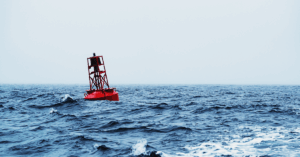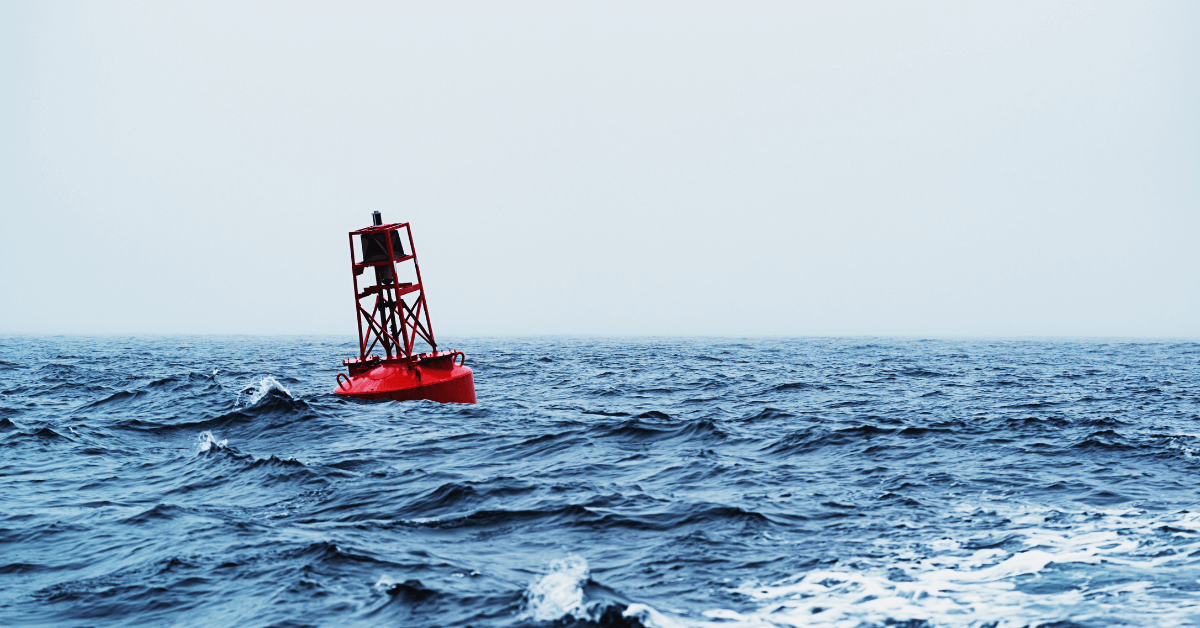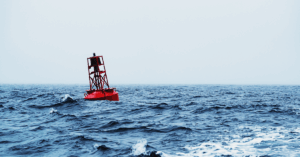
Open Watertight Doors & Faulty System Cause Vessel To Sink In Alaska
June 13, 2025
Whitchampion Becomes First Bunker Tanker Certified To Blend 100% Biofuel Onboard
June 13, 2025

The U.S. Coast Guard has proposed removing around 350 navigation aids, including buoys, daymarks, and lights, from the waters along the northeastern U.S., stretching from New York to Eastport, Maine.
The move is part of a major plan to modernise its Aids to Navigation (AtoN) system and adapt to the widespread use of digital tools like GPS and electronic charts.
The announcement was made on April 30, 2025, and the change would affect roughly 6% of the 5,640 federally maintained navigation aids in the First Coast Guard District, the region with the most aids in the entire country.
The Coast Guard said this step is intended to match short-range physical navigation aids with the current era of electronic navigation. As more mariners rely on global navigation satellite systems, electronic navigation charts (ENCs), and electronic charting systems (ECS), the agency believes it’s time to “rightsize” the system to match today’s needs.
Matthew Stuck, who manages waterways for the Coast Guard’s First District, was quoted explaining that the plan is aimed at improving safety and keeping marine traffic efficient by focusing on aids that work best with modern systems. He added that a resilient buoy system still remains important, especially in cases where technology might fail.
The Coast Guard clarified that physical buoys and other visual markers will not disappear entirely. These aids will continue to play an important role as backups to electronic systems, particularly during outages or system failures. The agency has spent the last two years studying the AtoN system to determine which aids are critical and which ones could be removed without affecting safety.
However, the proposal has raised serious concerns among boaters. Many of the buoys set to be removed are in dangerous spots, like harbor entrances, near underwater rocks or reefs, or in areas with low visibility. Boaters in New England, where fog is common, fear that removing these markers could lead to more accidents.
According to Senior Chief Ryan Lundy from Sector Long Island Sound, one of the key reasons behind the proposed reduction is the rising cost of maintaining navigation aids. He pointed out that even basic components like shackles-used to secure buoys, have seen a steep price increase, going from $45 to $350 each. Replacing all of them would cost seven times more than his total annual budget.
Captain Elisa Garrity from the Coast Guard said the goal is to support modern sailors, larger ships, and advanced navigation tools, including electronic charting systems and mobile apps that are now widely available and affordable. However, mariners have raised concerns that depending solely on digital tools can be risky, especially in areas where cell signals may be weak or non-existent.
Peter Swanson, a longtime boating expert, commented that while this change may look like progress, for sailors along Maine’s rocky coast, it might feel like a step backward. He advised boaters in foggy areas to be extra careful and to always carry several fully charged and reliable digital devices when heading out to sea.
The Coast Guard is asking the public to give their feedback on the plan. Mariners and coastal communities have until June 13, 2025, to share their opinions. People who depend on these physical markers for safe navigation are being encouraged to speak up before a final decision is made.
References: usharbors, shippingmatters
Source: Maritime Shipping News


